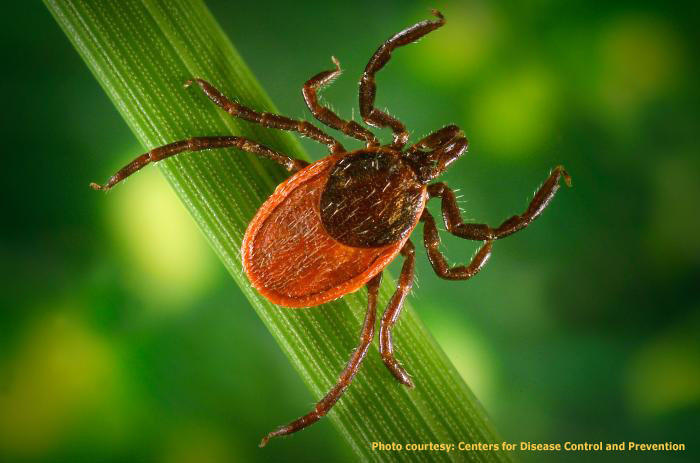
If you’re a forager, you get ticks. That’s just the way it is. You can’t spend time pushing through vines, crawling through underbrush, and wading through tall grasses without picking up some undesirable hitchhikers. I’ve had Lyme Disease once and I’d rather not have it again, so here’s what I do to minimize my exposure.
1. Forget about looking fashionable. Tuck those pants into your socks and your shirt into your pants. If your shirt has a collar, button it all the way up, and wear a hat if you can stand it. Light colors are best because they make it easy to spot ticks crawling on your clothing.
2. Each time you come out of the woods or a field, check yourself for ticks. Some latch quickly, but most crawl around for a while, looking for the perfect place to take their blood meal. Removing as many crawlers as soon as possible means fewer ticks have a chance to latch.
3. When you get home, take off all your clothes and immediately put them in the washing machine. Don’t let them sit in a pile on the floor, because ticks may crawl off the clothes and find you later. They may also find your cat or dog, then come back to you for another blood meal. Do not wait until you accumulate a full load. Wash your foraging clothes right away, on the hottest possible cycle, then dry them on high. It’s the heat from the dryer that kills ticks most effectively.
4. Stand in front of a full length mirror and inspect every part of your body. Yes, your clothes are still off. Use your fingers to explore your scalp and hairline, and if you have a friend or partner nearby, ask them to visually scan the places you can’t see.
5. When you remove a tick, kill that tick. Ticks have relatively hard shells, so use your fingernail to break that shell in half. You’ll hear it crack. If that seems unnecessarily cruel, I’m sorry. It isn’t.
6. Be sensitive to creepy-crawly feelings. I’ve picked ticks off myself on a NYC bus and in line at the grocery store because I could feel them on my skin. I’ve also felt all sorts of phantom crawlies on my skin after a day in the woods, but I’d rather be a little jumpy than get Lyme again.
7. Not all tick bites result in the oft-described, red, target-shaped rash. Mine didn’t. I got a solid red, swelling rash radiating from the location of the bite. I told the doc I’d removed a tick from that spot and STILL he didn’t test for Lyme. If you suspect you’ve been bitten, insist on a test. You’re the patient; it’s your right. And early treatment is key.
8. Consider soaking your foraging clothes in a permethrin solution. The jury is still out on exactly how effective this is, but initial studies show that tick nymphs (young life stages) are incapacitated by contact with permethrin. An incapacitated tick is a tick that can’t bite you. I will say that in the three years that I’ve been soaking my clothes in permethrin I HAVE NOT HAD A SINGLE TICK ON ME. Prior to that it was normal for me to remove 10-20 ticks every time I went foraging. Sometimes more.
9. If you find a tick that has latched, don’t panic. It’s not that difficult to remove them if you have a good pair of tweezers and a steady hand. Slide the tweezers up as far as possible along the tick’s body, just above where it penetrates your skin. Then, pull straight back. Do not twist or squeeze. If the mouth parts remain behind in your skin, you may either try to remove them with your tweezers, or see a doctor for complete removal.
10. Include a tick twister in your foraging tool bag. They’re inexpensive and they really work.
11. Don’t let fear of tick bites keep you off the foraging trail. It may be an occupational hazard, but if you’re vigilant, you’ll be fine.
I find a tape lint roller very helpful after plant walks or just hiking with the dog! Stevia whole leaf extract has been found to be useful for Lyme.